 By Sheelu George February 23, 2021
12 min read
By Sheelu George February 23, 2021
12 min readTop 5 cross-platform app development frameworks you need to know in 2021
Businesses can’t afford to miss their presence on platforms such as Google Play or Apple App Store. As per this report, the global market share of mobile was valued USD 154.05 billion in 2019 and was forecasted to grow at a CAGR of 11.5% annually from 2020 to 2027.
Businesses want to penetrate deeper in the markets through highly intuitive and engaging mobile apps as the apps can easily connect businesses to users through portable devices at any time. With the increase in the adoption of variable devices and customer base for the multiple domains, the mobile market saw a drastic change with maximum growth.
But businesses look for optimal, pocket-friendly solutions. Therefore, organizations opt for native apps. This gave cross-platform apps a reason to emerge as a vital and unrivaled choice for mobile app development on Android as well as iOS.
Let’s check out the top 5 cross-platform app development frameworks in 2021.
1. PhoneGap

PhoneGap, an open-source, cross-platform app development framework, enables mobile app developers to code in a hassle-free manner. It offers the flexibility to use different languages without any hardware restrictions to the developers. PhoneGap is developed by Adobe and it offers cloud-based solutions that allows mobile app developers to craft mobile apps directly in the platform.
Background
1. Open-source cross-platform application development framework with Apache License 2.0
2. The latest version of PhoneGap is 10.0.0 on 4th August, 2020.
3. PhoneGap is available for Android, iOS, Windows, and Electron platforms
4. Programming languages used are JavaScript, HTML, CSS, Java, HTML5, Objective-C, C#, C++
5. PhoneGap allows the mobile app developers to get access to Native APIs so that your mobile app can use all the native features such as camera, geolocation, accelerometer, contacts, and many more.
6. PhoneGap is best-suitable if you’re looking for a simple mobile application with a native look while saving a few bucks in development.
Pros of PhoneGap
- Robust backend: Offers faster development process while reducing developers efforts.
- Flexibility: Offers mobile app development with JavaScript, HTML, CSS, Java, HTML5, Objective-C, C#, C++
- Multi-platform: Offers mobile app development for multiple platforms with native look and feel
- UI libraries: Offers a vast UI libraries that helps in improving the viewing experience for different target viewers
- Faster development: Offers a quick development process due to the suppleness and flexibility it offers
- Large community base: Offers a large community base with adequate support
- Taps onto the device hardware: Offers complete utilization of device features such as camera, geolocation for better user-experience
Cons of PhoneGap
- Not suitable for app that will have a lot of graphic elements
- Lacks descriptive documentation that may be crucial for app development
- Not suitable for gaming apps
- Lack support for plugins that have hook
Popular PhoneGap Applications
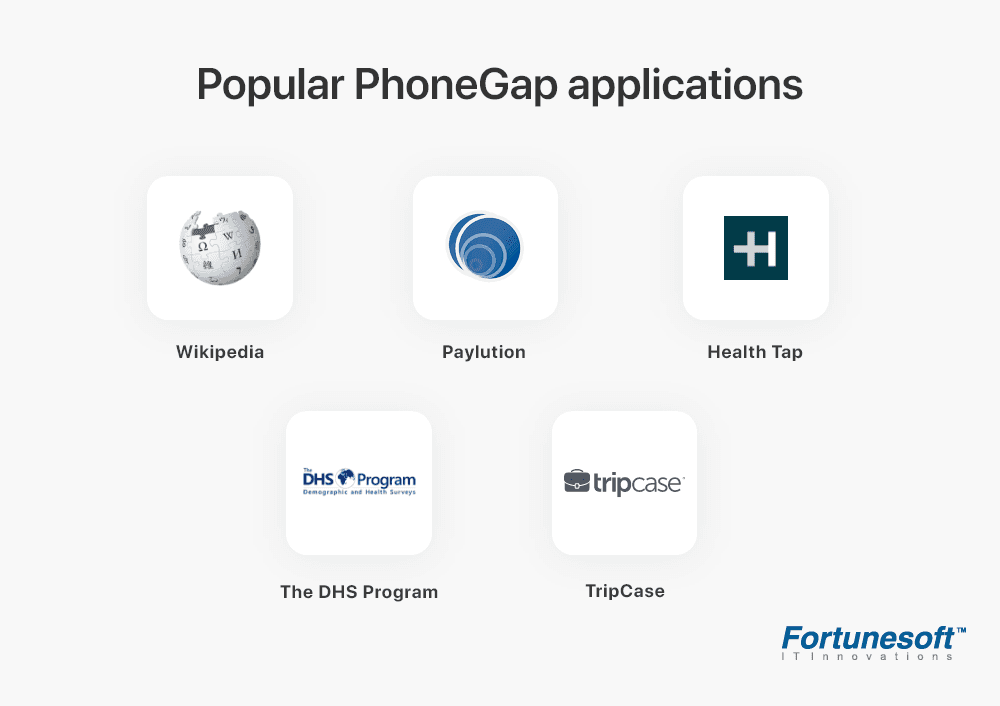
2. Ionic
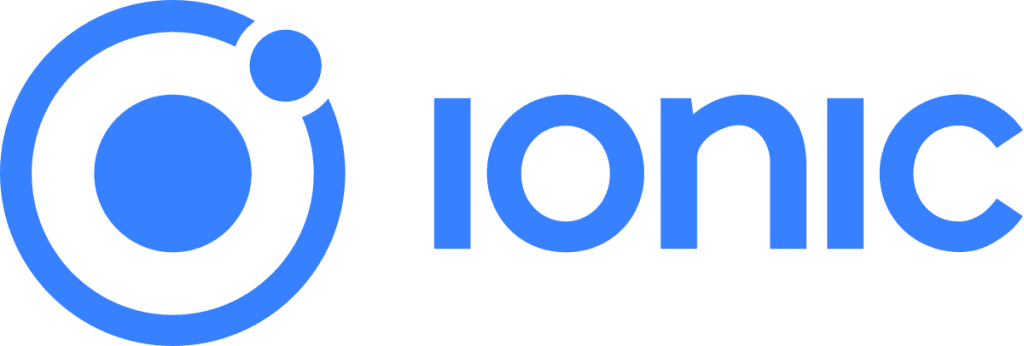
Now hybrid app development is easier with Ionic app development framework. If you are looking for faster development of your business app, Ionic is best-suited for you. Ionic uses a single code base. It has a huge library of tools and consists of the latest components. Ionic inherits a few iOS and Android design elements that allows it to build native-like hybrid apps and progressive web apps. Hire Ionic app developers for crafting hybrid apps that would seamlessly work on multiple devices.
Background
1. Open-source cross-platform framework for hybrid app development
2. Ionic was Max Lynch, Ben Sperry, and Adam Bradley of Drifty Co. in 2013
3. The latest version is 5.5.4 on 4th February, 2021
4. Ionic is built on AngularJS and Apache Cordova
5. It consists of MIT license
6. Ionic uses front-end technologies such as HTML, CSS, JavaScript, and Angular for application development
7. Ionic is mostly used for developing PWAs and native apps. If you want to target both web and mobile, Ionic is suitable.
Pros of Ionic framework
- Faster development and shorter time-to-market: Ionic crafts your mobile app in a shorter period of time for both the platforms as compared to apps built natively. If you build apps for each platform, it not only consumes a lot of time but also results in delayed time to market and increased costs.
- Browser support: Ionic offers browser support, proving beneficial for both developers and entrepreneurs. Ionic experts offer mobile application development with Angular using web-views in the browser. They don’t need any complex IDEs or editors but only browser web-views for building the application layout.
- Programming languages: Ionic uses front-end web technologies such as JavaScript, HTML, CSS, and Angular. It utilizes HTML5. As a startup, you may need to consult a leading mobile app development company that would guide your application development aligning your business needs for both the platforms with new technologies.
- A wide array of UI components: Ionic offers a wide range of plugins and UI components to enhance Ionic experts productivity and to reduce the development time and cost.
- Native plug-ins: Ionic has a lot of native plugins that help developers to get access to native device APIs. This offers an optimal experience to the application users for both iOS and Android platforms.
Cons of Ionic framework
- Consists of unstable native plugins
- Debugging is difficult with Ionic framework
- Applications with lot of graphics and animations aren’t suitable for Ionic development
Popular applications built with Ionic
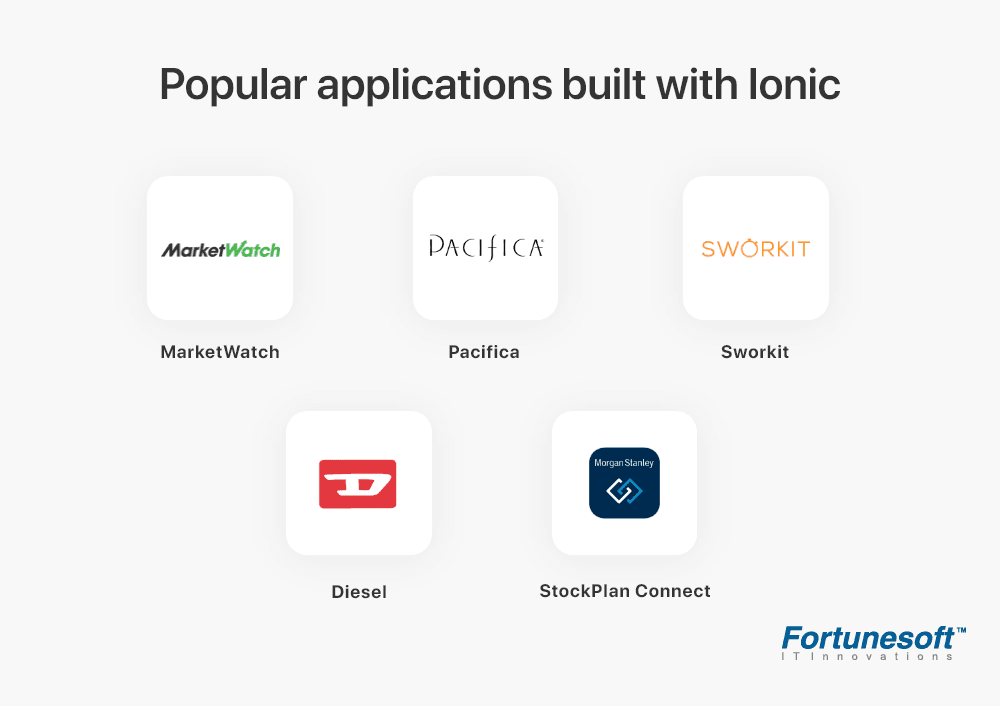
3. React Native

React Native is a popular cross-platform app development framework for both iOS and Android. React Native is undergoing constant improvement and is supported by a large community. React Native is based on React and doesn’t involve the use of WebView and HTML technologies. React Native has platform components in JSX and CSS–like polyfills. Also, React Native has no DOM API. It has the potential to combine the best features of JavaScript and React.JS.
React Native is best suited for apps that are required for Android and iOS. If you are looking for a mobile app that requires a custom design, then React Native can serve this purpose. React Native is a good candidate for applications that require shorter time-to-market and reduce production costs.
Background
- Open-source mobile app development framework
- Officially released by Facebook in 2015 for hybrid mobile app development
- Originally developed in 2013 as a web-interface platform
- The latest version is 0.63
- React Native offers native-like experience with more stability
- React Native is used for developing applications for Android, Android TV, iOS, macOS, tvOS, Web, Windows and UWP
- React Native uses JavaScript, Java, C++, Objective-C, and Python programming languages
- It supports Android, Android TV, iOS, macOS, tvOS, Microsoft Windows platforms
Pros of React Native
- Shorter time to market: Offers faster development as it has the potential to build applications for multiple platforms with the same codebase. It shares the codebase for iOS, Android, and the Web (with ReactXP and React Native for Web)
- Cost-effective: As a single codebase is used to develop applications for multiple platforms, mobile applications built using React Native are cost-effective as it saves time and money.
- One team for multiple platforms: As only a single codebase is required, you can have your app developed with a single development team that is familiar with JavaScript. This reduces the mobile app development cost. You don’t need to employ different teams for every platform.
- Rich ecosystem: Offers an accelerated software development process due to its access to a plethora of libraries and tools that increases developers’ productivity.
- Ensures stable growth: Offers a set of components that know how to display the app on a particular platform. React Native’s potential of app development without going in-depth of the platform, allows the developers to focus purely on application development. This results in the process of stable and resistant app development features and an organized release of features.
In addition to the above pros of React native app development, some other benefits that React native offers are:
- Seamless integration with the native application
- Easy setup
- Simplified usage of styling components
- Hot/live reloading feature
- Low app development cost
- Supported by external tools
Cons of React Native
- Requires new solutions to develop from scratch
- Requires documentation upgrade
- Due to use of Javascript, Objective-C, Java, and C / C ++, debugging is difficult
- It’s not a native solution as React Native is a cross-platform app development framework and to give it a native feel, it has to create a communication between the native world and JavaScript.
- React Native is sometimes slower than its native counterparts and takes more space
- React Native apps face slow testing time
- The team should be well versed with web technologies and native technologies as React Native is cross-platform
Applications using React Native
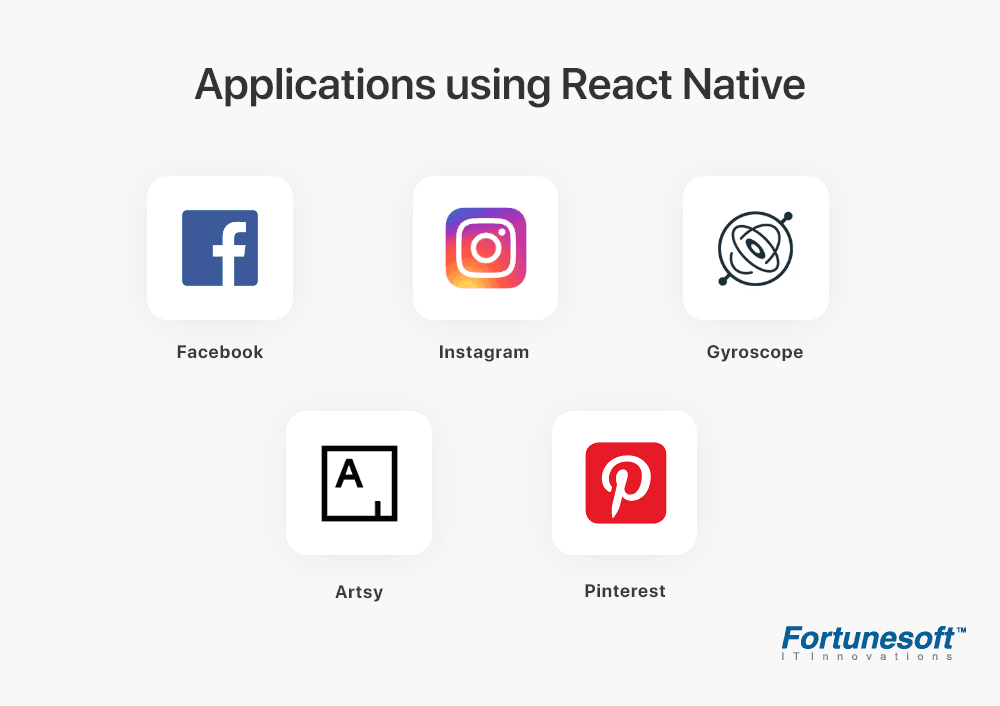
4. Flutter

Flutter is an open-source mobile app development platform created by Google. It is an object-oriented language and contributes in app development for platforms such as Android, iOS, Linux, Mac, Windows, Google Fuchsia, and the web from a single codebase.
Background
- Flutter was initially released by Google in 2017
- Latest version of Flutter is 1.22.6. It was released on 26th January, 2021.
- Flutter is written in C, C++, and Dart.
- It is an application framework with the new BSD license.
- Flutter is used to develop applications in Android, iOS, Google Fuchsia, Web platform, Linux, macOS and Windows.
- The main components of Flutter are Dart platform, Flutter engine, foundation library, and design-specific widgets.
- Flutter is best suited for MVP, especially if you are a startup.
Pros of Flutter
- Speed: Faster development and saves a lot of time, effort, and money due to single codebase for iOS and Android platforms
- Hot reload: Helps in making changes to the code and immediately view the results without recompiling the code. This simplifies bug fixes and experiments with various UI elements.
- Customization and fast rendering: Due to Flutter’s layered architecture, Flutter gives you control over the pixels on the screen and allows seamless integration and use of overlays and animated graphics, videos, text, and controls.
- Less testing: Due to the use of same code for different platforms, flutter app development requires less testing.
- Same UI: Flutter allows sharing of both UI code and UI on all platforms.
- Similar to Native app performance: The application performance is best in case of Flutter as it doesn’t depend on any intermediate code representations or interpretation. The Flutter app is developed into the machine code that eliminates any performance bugs of the interpretation process.
Cons of Flutter
- Immature framework
- Lacks advanced features
- Not entirely stable
- Many features aren’t yet supported
- Dart is comparatively new
- Dart includes fewer features and existing ones aren’t well-refined
- Flutter apps require a lot of space and takes longer to download and update
- The look and feel of Flutter apps aren’t 100% same as that of native solutions
- Frequent changes in Dart language makes the code difficult in long run
Popular Applications built with Flutter
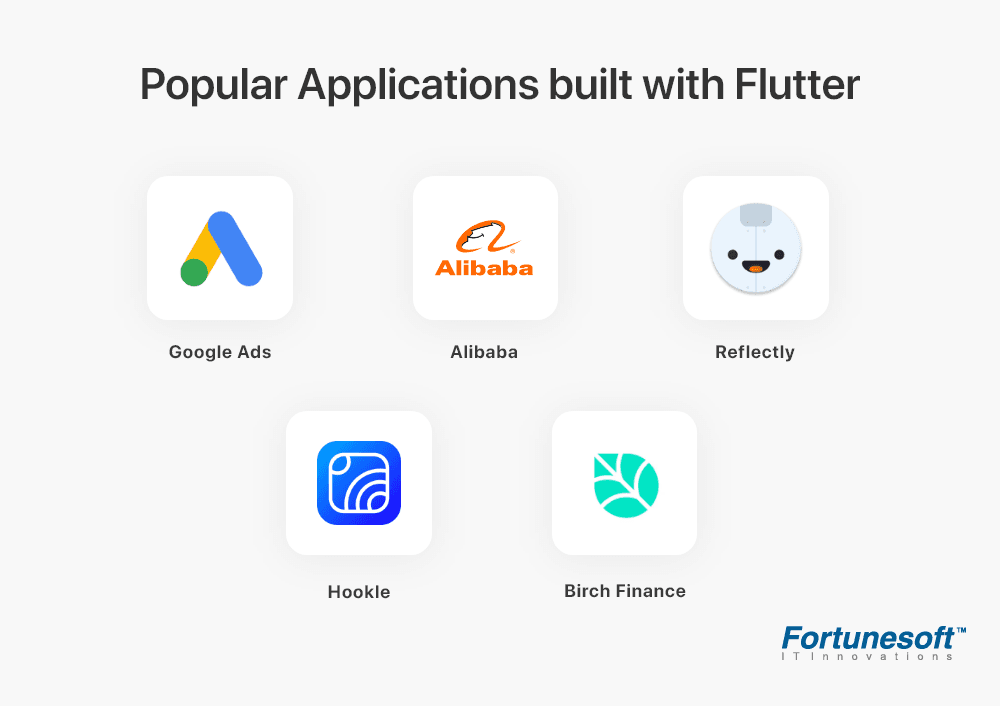
5. Xamarin

Xamarin is a tool used for developing cross-platform yet native applications for iOS, Android, and Windows. Xamarin uses .NET and C# and it shares 90% of the code on other platforms for crafting intuitive and engaging mobile apps.
Xamarin backs up Android and iOS apps with the help of C# bindings to native Android and iOS APIs that results in native user interface, notifications, graphics, animation, and other device features.
Xamarin uses a single codebase that contributes in faster development of mobile apps across all platforms. If you’re looking for giving your mobile app a consistent look across all platforms or provide a native look and feel, then Xamarin.Forms, an opens-source mobile UI framework will serve this purpose.
In a nutshell, Xamarin has the potential to offer modern, futuristic, fast, and high-performant native mobile apps with .NET and C# across all platforms.
Background
- Latest version of Xamarin is 5.0 Release 3
- It is based on Microsoft technology stack
- Shares 90% of the code over major platforms
- Xamarin uses C# language and is based on .NET framework
- Xamarin supports Android and Apple wearables
Pros of Xamarin
Same stack for all platforms: It uses C# with .NET framework for mobile app development for any platform. You can use Visual Studio or Visual Studio Code for Xamarin app development.
Performance is close to native: Xamarin apps are considered as native as it’s performance is continuously improved to match the native development standards.
User experience: Xamarin offers optimal user experience due to its use of platform-specific UI elements.
Hardware support: Xamarin eliminates hardware compatibility issues and has the capability to work with common devices across the platforms
Maintenance: Xamarin has maintenance and updates easier due to its cross-platform nature. It simplifies easy deployment of changes and updates for both iOS and Android apps.
Resources: There is a lot of learning resources available on Xamarin to help people develop technical skills on this framework.
Support: Xamarin supports portable versions for many platforms for TVs, wearables, and IoT
Cons of Xamarin
- It faces compatibility issues with third-party libraries and tools
- Xamarin apps are large as compared to their native counterparts
- There is a requirement for basic knowledge of native languages
- Xamarin offers limited access to open source libraries
Applications built using Xamarin
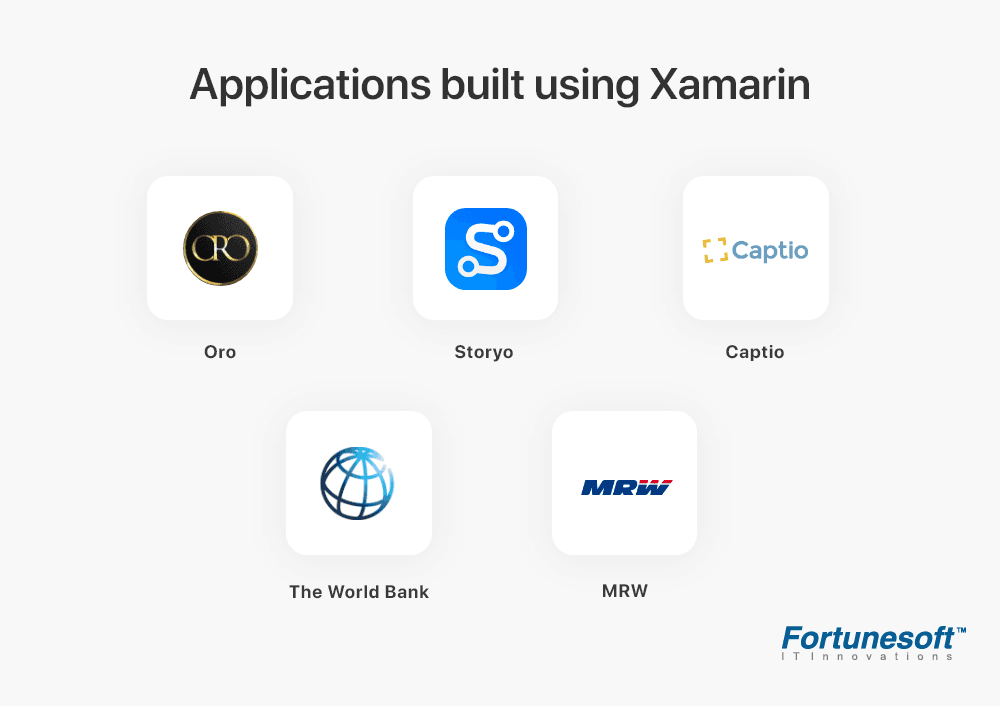
In a nutshell
Cross-platform app development offers enough mileage to startups, SMEs, large enterprises in the mobile market. As Android and iOS are the two major platforms in the mobile app development world, cross-platform app development is paving the way towards advancement and innovation. To choose the best cross-platform app framework for your project, you need an expert consultation from a leading cross-platform app development company to make an informed decision. With the right technology framework, you will get a business app that’ll provide a rapid growth in your business.
Author Bio


 Facebook
Facebook Whatsapp
Whatsapp LinkedIn
LinkedIn Pinterest
Pinterest







 Start Chat
Start Chat